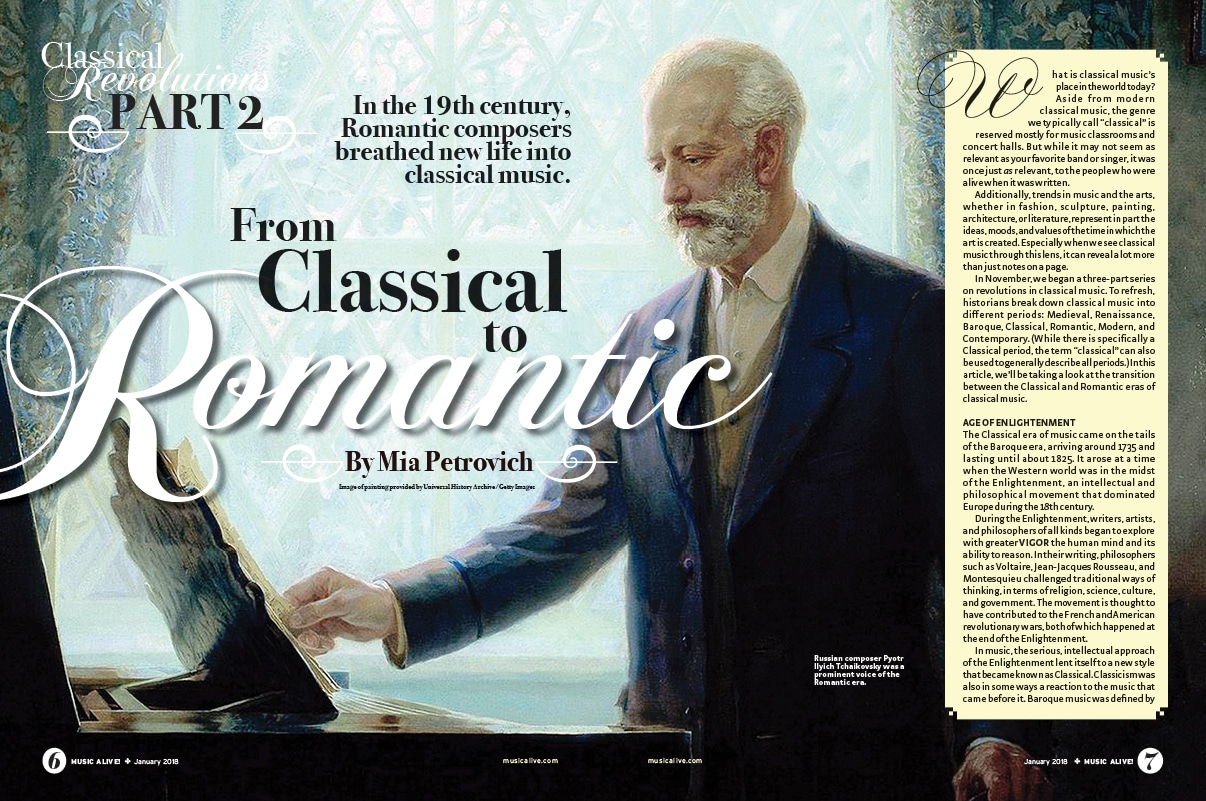Composers in the Romantic period took expected musical forms and reinvented them with new styles of expression.
In the latest installment of our series on revolutions in classical music, we took a look at the transition between the Classical and Romantic eras. As explained in the article, the Classical period was defined by an appreciation of elegant, structured, formal music and art. It coincided with the Age of Enlightenment, when philosophers and writers were exploring in more depth the human mind and its ability to reason. As a result, composers valued predictable, organized expression.
The Romantic era countered the values of the Classical period by allowing composers greater freedom of expression. German composer Ludwig van Beethoven was largely credited for ushering in the Romantic era with his experimental symphonies, which expressed intense, serious emotion, went against standard form, and overall placed greater value on individual expression.
Play the videos below for more examples of music from the Romantic era.
Nikolai Rimsky-Korsakov – Excerpt from Scheherezade
Composed: 1888
Russian composer Rimsky-Korsakov’s most popular work, Scheherezade is a symphonic suite based on One Thousand and One Nights, a collection of folk tales from the Middle East. The piece shows both Romantic nationalism through Rimsky-Korsakov’s many Russian-inspired themes, as well as exoticism, or a fascination with other cultures, through the work’s main inspiration.
Pyotr Ilyich Tchaikovsky – Excerpt from Romeo and Juliet
Composed: 1870
Another famous Russian composer, Tchaikovsky’s symphonic poem Romeo and Juliet is still used frequently in modern film and TV.
Felix Mendelssohn – The Hebrides
Composed: 1833
Said to have been inspired by Mendelssohn’s visit to the Scottish island of Staffa. The Hebrides is considered an early tone poem, or an orchestral work written to illustrate a poem, novel, painting, or similar artistic source.


